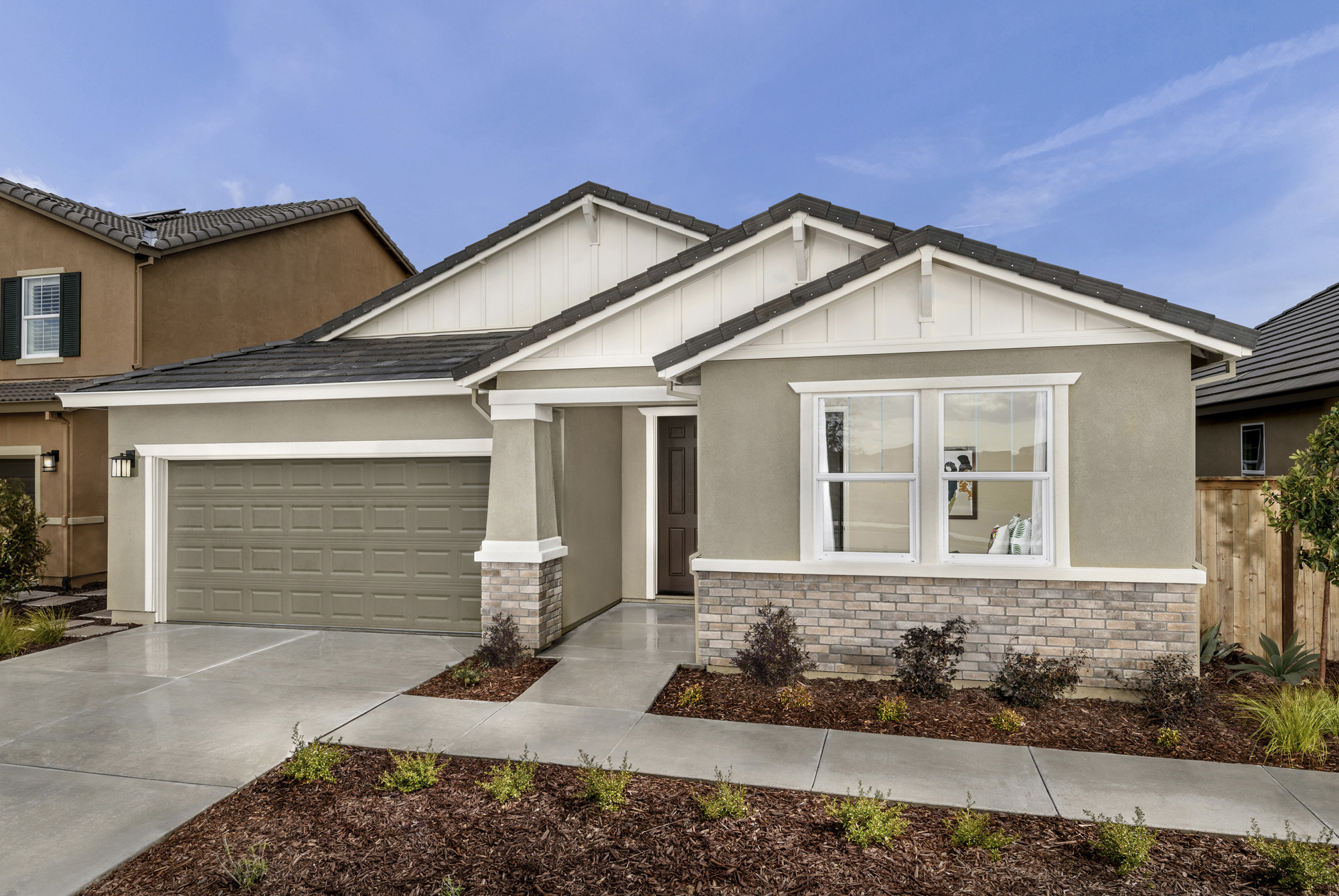Lower monthly payments for your new construction.

Building a new home is one of the largest — and most meaningful — projects you’ll ever undertake. That’s why it’s a good idea to explore ways you can secure a mortgage with lower monthly payments. You can take some of these recommended steps right now, while others are actions you’ll want to discuss with a loan officer you trust.
Buy your lot outright
Every home construction project is unique. In some cases, land acquisition is part of buying into the builder’s development. Other times, the lot is a separate transaction from the construction process. Whenever possible — which is more likely in the latter scenario — it’s smart to pay for 100% of the lot so that it’s not an additional loan or a part of your overall mortgage.
Make a larger down payment
In addition to buying a lot outright, try to save a significant amount for the down payment on your construction project. Even a modest increase in the amount you put down can save money over the life of the loan. If your parents or grandparents want to support you with funds for the down payments, you’ll need to provide a gift letter. Your loan officer can help make sure you have the right documentation for the mortgage application.
Other ways to increase your down payment include cutting out unnecessary expenses for a short time to grow your savings, paring down vacation plans, selling an unneeded asset, and holding off on any major purchases that aren’t urgent.
Shop around for home insurance
Unlike PMI, this coverage protects you, the homeowner, against losses due to theft, fire, and other catastrophes. Don’t automatically choose the cheapest option but do consider different companies for your homeowner insurance. Some insurers offer bundled discounts if you have more than one type of insurance with them, such as auto, boat or RV, homeowner, life, disability, etc.
Improve your credit score1
Homebuyers with higher credit scores can often get lower interest rates. The most important thing you can do is to always make every payment on time, including auto loans, college loans, credit cards, and any other obligations you have. Make sure your cards aren’t maxed out and avoid taking on any new debt. These things take time to improve your credit score and typically appear on your report in about 30–60 days; it can sometimes take a bit longer before these updates have an impact on the score itself.
In case you’ve recently paid off a major chunk of debt, or you’ve corrected an error on your credit report, you may want to ask your loan officer to do a rapid rescore. This is a way to quickly update your score to reflect the good progress you’ve made.
If you don’t have a credit history (because you don’t have debt) — or you need to improve it — a service like Experian Boost™ can be a useful tool. It links to your bank to show that you have a history of paying regular bills (streaming services, utilities, etc.) on time from your checking account. You may want to consider a rapid rescore after adding a Boost-type service.
Consider an adjustable-rate mortgage (ARM)
A hybrid ARM is a blend of a fixed-rate and variable-rate loan. This type of mortgage is structured with a lower fixed interest rate during the initial term (usually 5, 7, or 10 years), and then it changes to the adjustable rate.1
When the fixed rate period ends, your payments start to include the “adjustable” rate, which is based on a fluctuating industry benchmark plus a pre-determined margin above that rate. In most cases, the rate adjusts every 6 months for the remaining term of your mortgage.
Bringing it all together
Even though buying a home is an exciting time in your life, it can start to feel like you’re overwhelmed with information. We’re here to help you sort out all those details, so you can have a positive homebuying experience. Please contact one of our knowledgeable loan officers if you have any questions.
1 KBHS Home Loans, LLC, does not offer credit repair services.